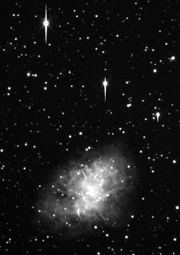Pronunciation /fɔːrˈtjuːnə/ Minor planet category Main belt Orbital period 1,393 days Spectral type G-type asteroid Discoverer John Russell Hind | Discovery date August 22, 1852 Alternative names A902 UG Aphelion 2.831 AU (423.443 Gm) Discovered 22 August 1852 Orbits Sun Named after Fortuna | |
 | ||
Similar John Russell Hind discoveries, Other celestial objects | ||
19 Fortuna is one of the largest main-belt asteroids. It has a composition similar to 1 Ceres: a darkly colored surface that is heavily space-weathered with the composition of primitive organic compounds, including tholins.
Fortuna is 225 km in diameter and has one of the darkest known geometric albedos for an asteroid over 150 km in diameter. Its albedo has been measured at 0.028 and 0.037.
The Hubble Space Telescope observed Fortuna in 1993. It was resolved with an apparent diameter of 0.20 arcseconds (4.5 pixels in the Planetary Camera) and its shape was found to be nearly spherical. Satellites were searched for but none were detected.
Stellar occultations by Fortuna have been observed several times. Fortuna has been studied by radar.
It was discovered by J. R. Hind on August 22, 1852, and named after Fortuna, the Roman goddess of luck.
Fortuna has been perturbed by the 80 km 135 Hertha and was initially estimated by Baer to have a mass of 1.08×1019 kg. A more recent estimate by Baer suggests it has a mass of 1.27×1019 kg.
On December 21, 2012 Fortuna (~200 km) harmlessly passed within 6.5Gm of asteroid 687 Tinette.
